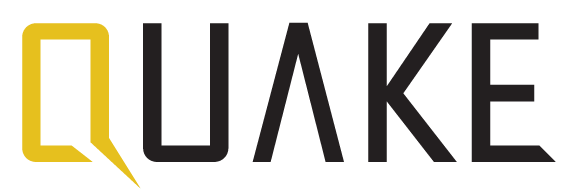In March 2020, one third of humanity was in lockdown and the jobs of 1.6 billion workers were imperiled. Then, on June 6th, the recent death of George Floyd sparked the biggest social movement in recent U.S. history with half a million people protesting in 550 locations across the United States. Up to 26 million voices have protested in unison over the past two months, most notably demanding immediate police reform and policy change at the highest levels of our government. However, the masses have also asked that businesses and major corporations step up and “Hire or Wire”. As a result, companies have been forced to reflect on their current practices and culture, as well as identify how Human Resources can best serve the evolving workforce.
So, how can we do better? Since change begins with each of us it’s important to reflect on our own performance. Since the launch of Quake Capital in 2017, we have striven to democratize access to venture capital and believe that a fund’s portfolio should accurately represent the diversity in our population and of the founders looking for funding. Over the past 3 years, we have invested 27% of our portfolio in female entrepreneurs and 12% in Black entrepreneurs. Benchmarked against venture capital’s global stats, 3% was invested in female entrepreneurs and less than 1% in Black entrepreneurs. That isn’t a typo. For some perspective, Black or African American people make up 30% of the global population and 13% total US population, and women in fact outnumber men. Combine those two stats and according to Inc. magazine, only 34 Black female founders have raised over $1M in venture funding since 2009, which represents only 0.0006% of tech venture funding.
I sat down with one of Quake’s portfolio founders, Jasmine Shells, who happens to also be one of those 34. Her company, Five to Nine is an event program discovery, management and evaluation software. The platform provides a one-stop shop that helps program leaders to manage everything from new hire on-boarding to employee resource groups while collecting key program metrics. 2020 has been a busy year for Jasmine; she was featured in Forbes 30 Under 30 for Enterprise Technology, she successfully navigated Five to Nine through COVID’s global lockdown, and she continues to send the elevator back down for other black female entrepreneurs any chance she gets.
Q: Welcome Jasmine Shells. I’d love to start off by talking about your reasons for starting Five to Nine. Take us back to that time: what was the “why” behind your business?
A: For some context, I was an IT consultant in corporate America. In my other job, I was the lead in the Black Professional Network, which is an employee resource group at the firm. I decided to take the role because it was a great place for me to connect with other folks who understood what it was like to be Black in America. Of course, corporate America is a different environment. My whole goal was to connect other Black folks with mentors and resources in the community. It meant a lot to me, and what I realized from my work in the Black Professional Network was how hard it was to be a full-time employee as well as manage an event program. I started to see that there was an opportunity to make these programs better by automating part of the process for these organizers. Additionally, management (who funds these programs) has no idea what the impact is. I essentially understood the synergy between the organizers who were doing the work and management who was funding the work and sought to rectify that disconnect.
Q: How has Five to Nine evolved, or how have you pivoted?
A: When we first started Five to Nine, we believed we were going to create a hub for community, where employees and organizers could come together. We eventually realized the market was actually asking for a tool for the organizers. Knowing this, Five to Nine shifted from being a hub to more of a harvester, built out with a suite of tools to make the organizer’s job easier and more efficient, as well as give them more insight into workflow integration.
Q: Millions of workers in the U.S. have lost their jobs since March due to the ongoing pandemic. How has this shifted what clients are focused on?
A: For most of our customers, they’re not going back to work until the new year. This is a huge change when it comes to programming since it is really centered around an in-person experience, thus you really have to thing about how to maintain business continuity. We started to focus on amplifying programming from a virtual standpoint and making it easy to consume information for the person who’s attending. When it was in-person, only the people who attended could actually be there. And yet, COVID has been this great equalizer in the sense that now we’re all remote and we can all participate in everything. Unfortunately, it simultaneously becomes a communication challenge. We’ve devoted a lot of time to strategize streamlining practices for those communications.
Q: Are there different partnerships that you see formulating because of all this?
A: We’ve been learning about providers that clearly deliver content to companies or Diversity, Equity and Inclusion (DEI) training solutions. I think there are some partnerships to be made there since we really sit as the infrastructure around that content.
“This is the type of tool our people leaders have been asking for to evaluate our programming initiatives.” – Dana Beckton, Diversity & Inclusion Director Sentara Healthcare
Q: How are organizations compiling the data of the different feedback points that are gathered in your platform? Is that being utilized to help shape events and programs moving forward?
A: This has been the most exciting piece about Five to Nine during this time. We saw about a 100% increase in program organizers leveraging our data function and leveraging our serving function. Some of our customers have launched completely new programs because of the feedback that they’ve received through our tool. We’ve had others who have changed the time or the structure or format of their programs since what worked in person doesn’t work virtually. Now we’re building out a more integrated and customizable data suite.
Q: Who are some of the clients you work with?
A: One of our customers is MasterClass. I think a lot of folks have been loving MasterClass during the pandemic. I think what was great about working with MasterClass is that they’re such a culture-oriented organization. During the pandemic and on their platform overall, they actually bring in a yoga instructor to facilitate wellness sessions with their employees on a weekly basis. They were able to use our data function to provide their employees with what they wanted during virtual work.
Q: According to Inc. magazine, just 34 Black female founders have raised over $1M in venture funding. You are one of those 34 Black female founders. What has it been like for you as a Black female founder? Talk to me about some of your experiences.
A: When I first started fundraising I think it was a steep learning curve because it was my first time ever doing it. I will share one of the more challenging moments. We had maybe $300K committed at that point and we were seeking a raise at that time of only $750K. I met with a potential investor in Brooklyn, a white male in VC. Each time he asked me a question, I would answer it. Rather than continue the conversation, he would rephrase the way I said my answer and add, “No say it like this.,” or “What you mean is this.” It was really off-putting because I was trying to talk, but that can be difficult when someone is interrupting you. Eventually, I got a little vulnerable and I said, “I’m kind of new to fundraising. I’m learning along the way,” because I could tell that it wasn’t going great. He responded by saying, “I’m usually pitched by you know white men and I haven’t been pitched by many women, let alone Black women.” At first I remember feeling really bad about myself, because I felt as if I was doing something wrong. I then realized it’s not that I was doing something wrong, but more so that this investor had just never really talked to a diverse set of people. Therefore, he was trying to make me fit into a box of how he expected to be pitched. I tell this story to demonstrate that founders come in all different packages and sizes. They come in different presentation styles, and VCs can really miss out on a potential opportunity by letting this bias get in the way. I think that was definitely a tough experience.
Q: 26 million people have participated in the Black Lives Matter movement. What are the key changes that you would like to see?
A: Actions speak louder than words. If you’re really all about equalizing the playing field for Black founders or Black people in tech, it’s important to understand what you are doing about it. A big concept that has really resonated with me is “hire or wire”. Make the investments, pay someone for their efforts, give them a chance. I think that will make a huge difference in the movement.
Q: How can we do better in equalizing the playing field? What are some key changes that you would like to see from investors and corporations?
A: I think on one side, from the investor perspective, is to increase outreach into networks that maybe you wouldn’t have thought about before. There are some organizations looking to increase representation amongst Black founders but also what type of partnerships can exist that could provide another lens or perspective. I think identifying the gaps is super important. Even in vendor management, a huge thing as well is supplier diversity. I don’t know if that’s understood or talked about as much, but I think that’s something really important. As you seek to promote Black folks within the organization, are you thinking about the ecosystem and how the vendors that you choose and support are diverse folks who are underrepresented and underestimated? An investment there is huge. It really does do a lot for someone’s business by being on the client side or being on the investor side.
Q: I also think that we should publish a list of resources to act as a good guide to how we can do better.
A: Yeah, we do have a guide. It’s a guide that focuses on how people can help. With the onset of Black Lives Matter and Juneteenth, it’s a resource that’s probably been one of our better performing pieces of content. People really want to know how they can help so I’m more than happy to share that awesome stuff.
Here are some guides that will help:
https://fivetonine.co/blog/2020/6/18/juneteenth-resources-to-celebrate-reflect-and-connect
https://fivetonine.co/blog/2020/6/5/five-to-nine-for-black-lives-a-guide-to-allyship
Q: A Deloitte study focuses on the possibilities and the opportunities that corporations have to really balance out the human connection to this virtual technology-based environment. What elements can Five to Nine bring to make it more human?
A: Program organizers in particular are really the brains behind creating these experiences. They’re the ones who are putting forward the ability to connect with these organizations. We see that as such a huge opportunity to give them more time to focus on the strategy and execution versus all the mundane tasks that go around with event and program management. We want to give them the tools to not only have more time to focus on strategy, but also get feedback quickly to know if their strategy is working or not, as well as knowing whether to pivot. That’s one side. We saw two things occur with the COVID pandemic and eventually the Black Lives Matter movement. When COVID first came, there were a set of prospective customers and we were close to closing. But for some industries, their budgets for D&I (Diversity and Inclusion) was completely cut where whole teams were almost eliminated, or furloughed. That was shocking and upsetting to see. It also shows first news companies are willing to cut them.
When Black Lives Matter comes around, they’re all posting these squares about their commitment to their Black employees and how it all matters. I thought it was interesting; there were a lot of Black employees at these companies who came out and rejected these actions. The companies were trying to just fit in when they were not living it internally. Maybe the reason why management does cut those budgets is because they don’t realize the ROI on those programs since they don’t have insight into it. We believe information is power and we’re also trying to provide organizations with that information to understand how powerful these programs are when it comes to the retention and the engagement of their people.
Q: What corporations do you see doing this really well? What corporations do you commend in their efforts throughout not cutting DEI?
A: One of our customers and investors based in San Francisco is Kapor Capital. They’ve always been focused on D&I and they’ve done well in their fund, which I think is interesting and it’s a principle. They’ve had a lot more content, they’ve always had great concepts, such as how to create the business case for employee resource groups on diversity, and even on policies. It’s great just to see the breadth of programming that came out of a turbulent time but they’ve really amped it up. I think they’ve also just increased some of their commitment so I thought that was an exciting example to see. I’d also say Figma, one of our customers, has also done an incredible job. They always think about what their birth control programming is. They asked about accessibility. We integrated more options for accessibility into our tool. We want to work on the engagement standpoint as well. What are the accessibility options? This is a whole different level that sometimes we don’t see if it doesn’t impact us. I thought that was something that was really special and it also was a conversation that made us make updates within our platform.
Q: Are there any questions that we haven’t covered that you are passionate about and want to discuss?
Thinking about folks who have made it to the top or who are in seats of influence, I want them to consider how they could send the elevator down to bring somebody else up. I talked to my executive coach about this all the time. One of my life missions and goals is to empower other Black female founders and for me, it’s one part of encouragement based on my experience. The other part is providing those resources to someone else, and then they’ll bring other people along with them. That’s the big thing I think about: how can we continue to make that happen? Yes, everyone has power, everyone has influence. How can we leverage our own circle of influence or power to empower others?


